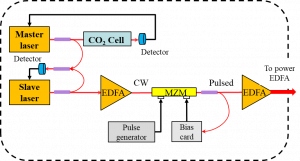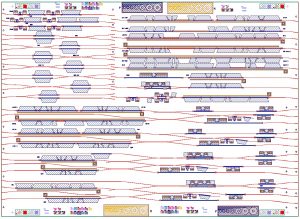Monolithic integration of optical devices greatly reduces the cost, size, weight and power consumption (SWaP) of photonic systems. For space applications, this can enable deployment on smaller platforms and more frequent missions. This project aims to measure atmospheric constituents such as carbon dioxide (CO2) using a Lidar photonic integrated circuit s (PIC)s that are closely integrated with control electronics. Our group works together with NASA Goddard Space Flight Center to convert an existing bulk optics Lidar system into a PIC, thereby demonstrating the feasibility to apply PIC technology to Earth Science. The current focus is on CO2 sensing, but the technology is transferable to the measurement of other gas species such as methane (CH4), water vapor, and oxygen (O2), and to other laser-based Earth Science measurements such as surface pressure and winds.



Bibliography:
- “Active Sensing of CO 2 Emissions over Nights, Days, and Seasons (ASCENDS) Mission”, Science Mission Definition Study 2015, ASCENDS Ad Hoc Science Definition Team, April 15, 2015, ASCENDS, 2015
- Schimel, D., Stephens, B. B., and Fisher, J. B., “Effect of increasing CO 2 on the terrestrial. carbon cycle,” Proc. Natl. Acad. Sci., 112, 436–441, doi:10.1073/pnas.1407302112, 2015.
- K. Numata, et al., “Frequency stabilization of distributed-feedback laser diodes at 1572 nm for lidar measurements of atmospheric carbon dioxide,” Applied Optics, vol. 50, no. 7, pp. 1047-1056, 2011.
- J. R. Chen, K. Numata, S. T. Wu, “Error reduction methods for integrated-path differential-
absorption lidar measurements,” Opt. Express, 20, 15589-15609, 2012.
Collaborators: NASA Goddard Space Flight Center